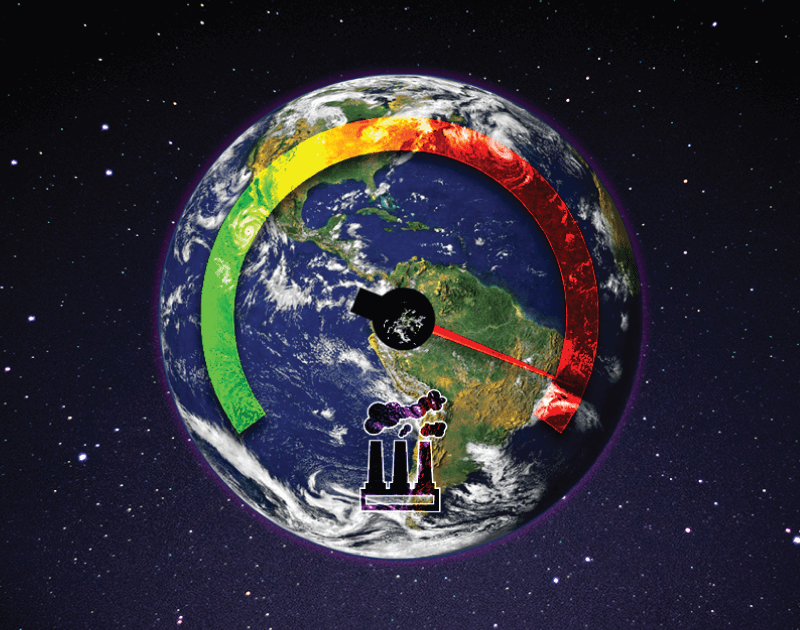Comparing Greenhouse Gas (GHG) Emissions Estimation Standards In Canada and the World
Written by: Gary Michor (CEO), Screaming Power Inc.
Climate change is obvious – either you agree or you don’t. The key concern is the uncontrolled emissions of greenhouse gas (GHG) into the atmosphere. Human activities and energy consumption are primary sources of GHG emissions and release uncontrolled GHGs into the atmosphere.

It has been estimated that commercial buildings are responsible for around one-fourth of total GHG emissions. Our research, focuses only on GHG emissions from energy use in residential and commercial buildings. Electricity and natural gas consumption are often the largest sources of emissions by individuals and corporations, and it is important to understand and report these emissions correctly.
Our research compares Canadian bodies like ECCC (Environment and Climate Change Canada), NRCan (Natural Resources Canada), and Government of Ontario; regional bodies like EPA (The United States Environmental Protection Agency), ISCC (International Sustainability and Carbon Certification), and EEA (European Environment Agency); international bodies like UNEP (United Nations Environment Programme), WRI (World Resources Institute), and FAO (Food and Agriculture Organization). In fact, with each standard having its own estimation method, constraints, and thresholds/emission factors, GHG emissions estimation is not a straightforward task. Some parties have proprietary tools for energy management and GHG emission calculations, e.g., EPA’s ENERGY STAR Portfolio Manager® and NRCan’s RETScreen. You would think the emission end result come out the same with all tools, right?
Obtaining a uniform method for GHG emission estimation is challenging and actually impractical due to many distinct factors including the regional average temperature, weather diversity, land use policies, fuel availability and the types of fuel people rely on. Standards and international organizations do not provide simple and standardized help for sharing GHG data which could be very useful for educating individuals and enterprises. Standards provide their own GHG emissions estimation methodologies, the calculation of which might vary. This variation comes from different emission factors for the same fuel type and/or due to the fact that internal mass or material types of the same fuel vary that are found and burnt in different regions.
To properly calculate the GHG emissions a clear understanding of standards, their relationships, the similarities and dissimilarities among them is important. We researched the differences in the varying GHG calculations based on a single building’s carbon footprint. Our findings suggest that GHG calculations vary based on the estimation method one follows and on the default CO2-equivalent emission factors one applies. In fact we found out that unless you understand the methods and their approach, you could be unknowingly using multiple methods to calculate your ongoing results.
Occasionally, countries apply wrong emission factors for fuels like coal. Our finds highlights key differences in each GHG emission estimation standard, i.e., how they estimate GHG emissions, why the final emission value varies, if a variance exists. Gary Michor, CEO of Screaming Power, says “GHG standards should provide very simple tools and automation like Application Programming Interfaces or API’s to ease the confusion and get everyone working on the same page. Unfortunately this is not the case. Our aim in our research is not to improve GHG emissions estimation methods, rather, provide a bird’s eye view of the major GHG standards available at present. However, we found there was a lot more to it.”
Screaming Power is funded in part by the Government of Ontario through a SOSCIP award from Ontario Centres of Excellence (OCE). We thank NRCan (Natural Resources Canada) supporting our research on GHG emissions. We also thank our university partner, Ryerson University, and the continuous support from SOSCIP to use their computationally intensive SOSCIP Cloud Analytics Platform.
See More Details Here.
For our detailed analysis, make a request through our website and we might surprise you and provide it to you.
About Screaming Power Inc.
Screaming Power is revolutionizing customer engagement by providing a mobile platform that connects the energy user, allowing for effective and secure two-way communications to educate, change behaviour and encourage sustainability. Our extensible Intellectual Property provides a low-cost, digital infrastructure for a self-sustaining Eco-System. Our Scream Utility & Scream Enterprise mobile solutions focus on reducing ‘cost-to-service’ for utilities while driving satisfaction and facilitating the delivery of innovation (e.g., connectivity to the IoTs).
